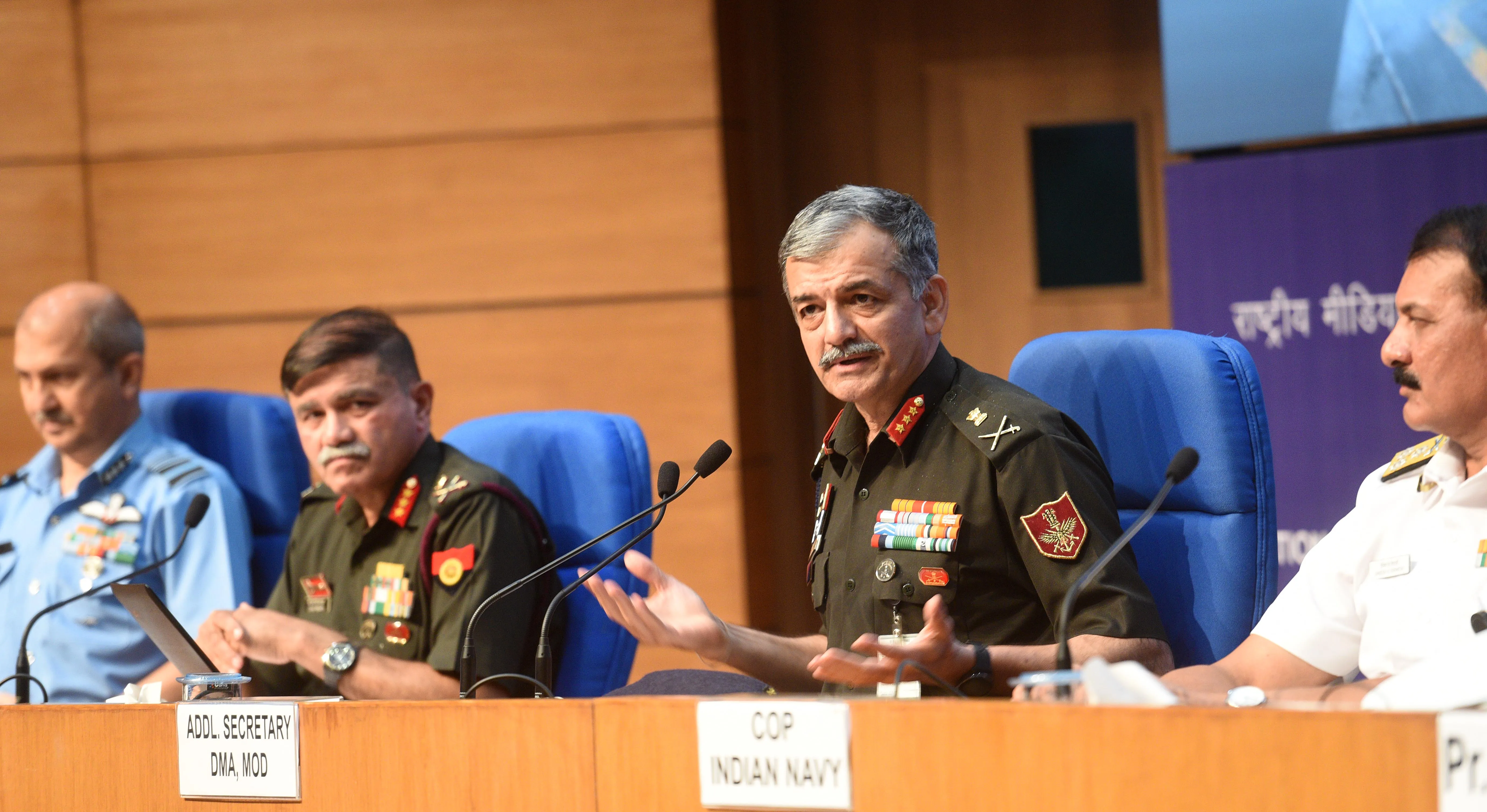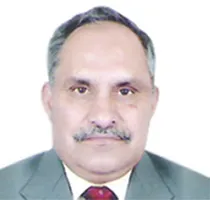
A career in the military is like no other, entailing sacrifices in some cases even the ultimate, that has more to do with intangible factors such as dignity and honour than financial remuneration. It is thus short-sighted to make the Agnipath Scheme solely about reducing expenditure incurred by the military. Given the huge impact it will have on India’s social fabric and the army’s ethos and functioning, the repercussions could be damaging. Given our fragile security environment and China’s aggressive designs, employing such a radical reform may not be prudent. History might repeat itself, as witnessed in 1962 when India was caught by surprise as Nehru and Menon initiated reforms that led to immense turbulence within the higher leadership and dissonance between the General Staff and line units during the Sino-Indian War.
A suitably restructured Agnipath Scheme can be considered along these lines, otherwise, it can create more problems than it claims to resolve.
The need for change is hampered by the fact that the government has not issued a comprehensive National Security Strategy document that articulates the goals and interests and the uses of elements of national power in achieving our desired goals. For the military, the NSS is the foundation for a comprehensive military doctrine that dictates how the military must be organised, trained, and equipped to carry out its assigned missions. Moreover, change cannot be in isolation; it cannot be done without taking into consideration existing legacy systems and the extent to which new ideas and technology can be absorbed without affecting internal cohesion. The government is unimpressed with this line of reasoning and has gone ahead with launching the scheme, without even conducting a test run.
The scheme seems to be conceived in haste by a team with seemingly limited experience or understanding of military ethos or functioning. The advantages the government hopes will accrue are plain hyperbole and as to whether those not selected will find jobs, as the government and corporates have promised, is pure speculation. If history is any judge, reserved vacancies for the military veterans, in PSUs, Government, CAPF etc. remain vacant.
Earlier, to ensure all States and UTs got a fair representation within the army, the intake was based on a mathematically sound and transparent policy, in vogue since 1966. It took into consideration factors such as the annual wastage rate, the RMP factor <1>and the intake pattern of previous years. By doing away with this in favour of a centralised pan-India merit list, greater advantages will likely accrue to those residing in regions that have better schooling facilities and higher literacy rates. This will be at the cost of those residing in remote and risky areas, such as along our borders, mountainous regions, etc. It will accentuate regional imbalances and lead to an increase in fissiparous tendencies and strengthen separatist movements as is the case in Pakistan where the army recruitment from Punjab is at the cost of other sub-nationalities.
Another key feature that has been touted is the better qualitative standards of those recruited. This is, however, questionable as all qualitative requirements laid down in terms of age, eligibility, educational, medical and physical criteria remain the same with only some minor tweaks. Combat units operate as a team, and these are commanded by NCOs/JCOs/Officers who are older and whose physical standards will not match that of the young soldiers they command. This has always been the case and is taken into consideration in all planning parameters.
How does one account for the dichotomy that on one hand, we want to recruit young while we also want them to be technically proficient? How is recruiting those who have only completed their high school compatible with the high technical skills required? Being adept at using a mobile is no measure of technical skills. Moreover, training for personnel in specialised units such as the Special Forces, armoured, artillery, and engineers, and for those operating crew-served weapon systems like tanks, guns and missiles, requires additional training of 1-2 years advanced training. By the time an Agniveer qualifies to serve in one of these units, it will be time for them to leave, which is a waste of time, resources, and funds.
The four-year service limit for Agniveers is not feasible and will result in sub-optimal performance. To suggest this will not have any adverse operational impact given the limited numbers of Agniveers that will be inducted is disingenuous. The adverse impact on unit capabilities as their numbers increase and form 50 percent strength of a unit by the end of this decade can be gauged from the utter incompetence that has been exhibited in Ukraine by the Russian army as it attempts to occupy that country with troops who are either conscripts or on limited contracts.
How does one account for the dichotomy that on one hand, we want to recruit young while we also want them to be technically proficient? How is recruiting those who have only completed their high school compatible with the high technical skills required? Being adept at using a mobile is no measure of technical skills.
The impact of the “All India, All Class” (AIAC) recruitment pattern will be on the regimental system that is in vogue in the combat arms, mainly the infantry. The infantry has been the backbone of our army, and these are mainly ‘Single Class Regiments’. Their performance over centuries has been superlative and they are respected for their professionalism across the world. Though the thought that the regimental system is a colonial legacy worth scrapping might hold water, this can hardly be done overnight. Cultural affinities and traditions play an extremely important role within the army, and cannot be wished away on a whim, however laudable the objective may be.
By having stopped recruitment for the past three years, and with 50,000-60,000 Personnel Below Officer Rank (PBOR) superannuating annually, the shortfall in the Army stands at around 1.5 lakhs. The new recruitment policy with just about 40,000 odd vacancies in the army suggests that we will continue to be annually deficient of another 10,000-15000 PBOR in addition to the earlier deficiencies. This implies combat units are at 25 percent short of their authorised strengths, in addition to the 10 percent personnel that are assumed to be temporarily unfit for duty This has huge implications on a unit’s operational capabilities, even more so, for those deployed in mountains.
Boots over bots
It must be accepted that there has been increasing consensus amongst politicians, bureaucrats, and the policymaking community, that the size of our military is unsustainable. Given the geopolitical situation in the region, the type of threats that confront us, and the changing nature of warfare, existing capabilities have increasingly become irrelevant. There is also little possibility of increasing the defence outlay and since a bulk of it goes into meeting revenue costs, very little is left for capital expenditures involving modernisation.
The military leadership, while cognizant of the issues involved, are reluctant to initiate substantive changes that affect the status quo. Some of this is attributable to their conservative mindset, the conventional approach to warfare, and reluctance to change, but to be fair, most analyses suggest that the United States was forced out of Afghanistan and Iraq because of a lack of boots on the ground. Russia seems to be facing similar difficulties in Ukraine.
In addition, increasing focus on operations in high-altitude mountains requires us to depend more on manpower than technology, as technology has serious limitations in such extreme terrain. Moreover, along disputed borders, ground once lost is difficult to regain, thereby, requiring linear deployments and more troops.
While rightsizing of the military is necessary, the question of reduction within the Defence Ministry and establishments reporting to it, amounting to another 500,000 civilians, continues to be glossed over for obvious reasons. For rightsizing of the army, numerous options are available, like mechanisation of all forces deployed on our western borders that will result in manpower reduction with increased dependence on technology. Another option could be of increasing our territorial army numbers. Since they are only embodied for the conduct of regular annual training and in times of necessity and are manned by part-time volunteers, there will be reduced expenditure on pensions and salary.
The best option, however, would be to follow up on what the 33rd Report of the Parliamentary Standing Committee for Defence’s suggestion of undertaking lateral transfer of serving army personnel to CAPF on completion of seven years of service. The Kargil Review Committee, Group of Ministers on Reviewing National Security System and the fifth and sixth Central Pay Commissions have also recommended this. However, the CAPF has refused to accept lateral transfers on grounds that it will impact the promotion prospects of their own cadre. A suitably restructured Agnipath Scheme can be considered along these lines, otherwise, it can create more problems than it claims to resolve.
<1> Recruitable Male Population (RMP) is taken as 10 percent of the total male population of a State/UT, based on the Census of India Report 2011. The RMP factor for a State/UT was calculated as the proportion of RMP of that State/UT to the RMP of India.
The views expressed above belong to the author(s). ORF research and analyses now available on Telegram! Click here to access our curated content — blogs, longforms and interviews.




 PREV
PREV


